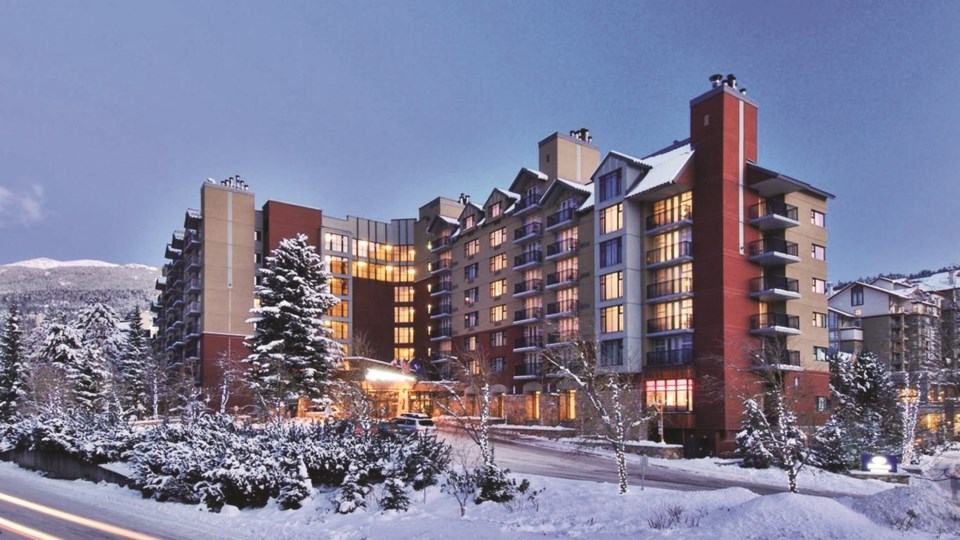Whistler has long been known for its customer service. When you’re North America’s largest ski resort and a playground for the rich, a certain standard of service is par for the course. But maintaining that standard becomes increasingly difficult when you’re in the midst of a years-long labour shortage, one of the tightest rental markets in recent memory, and prices rising across the board.
“When you get to the top, you’ve always got the target on your back, so I think it would be foolish to think it’s not a risk to lose that situation. It’s not a guarantee and it’s not something you can maintain by being complacent,” said Hilton Whistler GM and Whistler Chamber of Commerce board chair Chris Vick. “I definitely think there’s a risk. Is there more risk now given our current scenarios than there was previously? I suppose there probably is as much now as ever, maybe more.”
In spite of the risk, Tourism Whistler (TW) and the hotel sector’s internal service scores haven’t faltered. This summer, when labour shortages put “some increased pressure on service staff” in peak periods, TW noted in an email that “customers have generally been understanding, and service satisfaction levels have remained relatively strong compared to previous years.” And while guest survey scores have dipped slightly in “service efficiency,” they have increased in “service personalization,” TW said, indicating that “front-line staff were making a personal connection with customers, even if wait times had increased.”
It’s this strategy that Vick credited with his hotel and others continuing to see strong internal customer service scores.
“I think one of the big takeaways from the whole COVID experience and pandemic response— and especially in hotels—was the big focus on making experiences more individual,” he said. “That’s where we’ve seen our success. It’s like the pandemic was a bit of a retooling to get us back to the very core of our business model and I think in a lot of ways that was helpful. I don’t think our experience at the Hilton is unique.”
The true litmus test, Vick added, will come this winter, anticipated to be the busiest in terms of visitor volume since at least 2019-20.
“We’re going to see volumes this winter that we haven’t seen for the last couple winters and that will be the risk and the challenge to see how we’re able to handle that volume,” he said.
In the spirit
Another sign of the resort’s continued rebound is the high level of demand for the Whistler Experience program, run by the Whistler Chamber of Commerce. According to executive director Louise Walker, registration for the customer service training program has already exceeded the approximately 1,700 sign-ups the chamber saw in each of the past two winters. Walker said the chamber is aiming to get back to 2018-19 levels, when there were close to 3,000 registrants.
Walker is hopeful the option to take the training modules online will help increase enrolment.
“It’s very affordable, first of all, and it’s designed to be online so you don’t have to take time out of your busy day,” she said. “When you invest in your staff, it makes them more confident in the job they’re doing and that in itself is a retention strategy.”
The Chamber is now putting the finishing touches on its Whistler Talent Plan, a comprehensive guide aimed at helping resort employers better attract and retain staff. What’s notable about the plan, expected for release in the coming weeks, is its broad scope.
“The Whistler Talent Plan looks at a whole range of strategies for attracting and retaining people, so that might be education and learning, the data collection piece, and also making people feel welcome in the community and … making Whistler your long-term home.”
Shouldering the burden
Part and parcel with any local discussion around labour is, of course, housing insecurity, identified by 95 per cent of responding chamber members as the No. 1 contributor to employee turnover and labour loss in the chamber’s municipal election survey this fall.
More and more, providing housing to prospective staff is an expectation for resort business owners, particularly among larger employers with the resources to do it.
The local hotel sector has been ahead of this curve for years, but even the larger franchises with deep pockets are starting to strain under the pressure of Whistler’s housing crisis.
“I think what’s changed is the number of people coming to the resort that are unable to find their own accommodation, so the demand on employers to provide housing has dramatically increased,” said Vick, adding that, previously, the hotel might have to house 20 to 30 per cent of its seasonal staff. Now, that ratio has jumped to 80 or 90 per cent.
It begs the question: at what point does it all become too much for businesses—and by extension, the consumer—to shoulder?
“I think ultimately it’s a matter of what the end user is willing to pay for. Our costs have been going up on all fronts; everything that costs us money as employers and businesses is more excessive than it was before and one of the major contributors is the subsidizing of housing,” Vick said. “Is it too much for businesses to handle? If we can fill the resort with people willing to pay $28 for a burger and $11 for a pint, maybe it’s not too much. But at some point you reach a tipping point where the revenues we’re able to bring in no longer cover the rising cost needed to run our business.”



